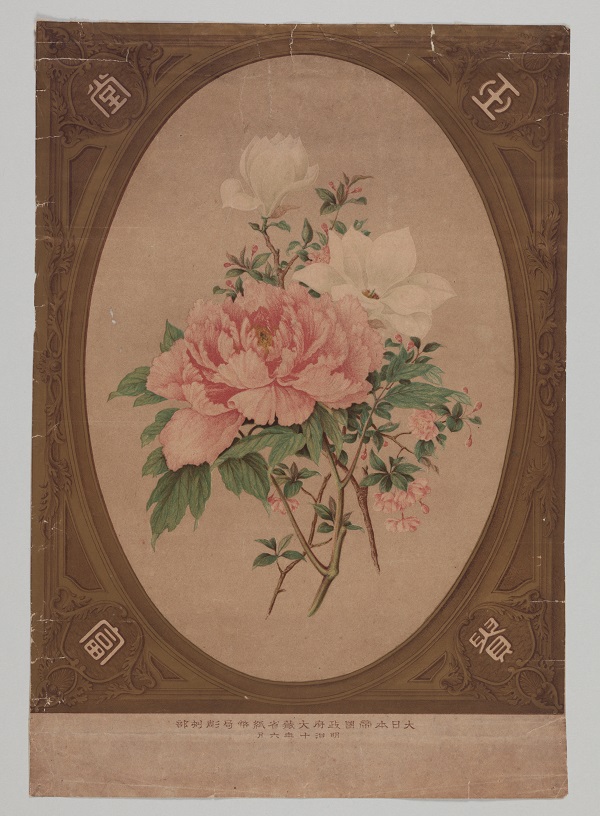Collection
Gyokudo Fuki
1877
No. 00437
Early poly-chromatic lithographic prints in Japan. The painter Ishii Taiko, who worked for the Ministry of Finance, was involved in the production of these items. The Banknote Office (renamed the Banknote Bureau in 1877) started a lithography business to study the prevention of banknote forgery and hired a lithographer by the name of Charles Pollard, to teach anti-fraud techniques to Teiko and others. As the result, these materials were produced in the year 1877 (Meiji 10) and were exhibited at the first National Industrial Exhibition held in the same year. After this, the study of polychrome lithographic printing was promoted at the Banknote Bureau (renamed to the Printing Bureau in 1878), and Dainippon Kahei Seizu (detailed illustrations of Japanese money), Kokka Yoho and others were published. Gyokudo Fuki is one of the traditional motifs of Nanga (the southern school of Chinese painting) that combines peony, Gyokuran (yulan) and aronia. Peony represents wealth, while yulan and aronia represent a beautiful edifice, which is a symbol of wealth.
Exhibitions and collections
-
- Latest exhibition information
- The latest information is provided for visitors about exhibitions, events and schedules.
-
- List of temporary exhibitions
- Information is provided on temporary exhibitions underway and related events.
-
- General exhibition
- Here we introduce our general exhibition.
-
- VR Theater lineup
- Details of the programs currently being shown.
-
- Collection hunting
- Here we introduce some of the artifacts from our collection.

